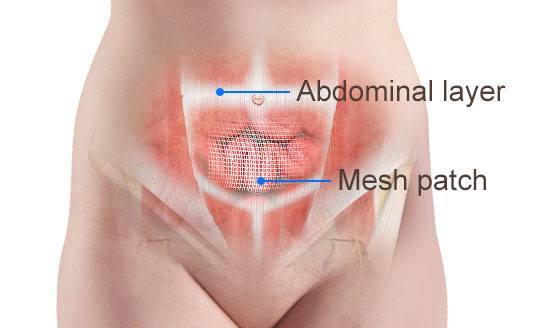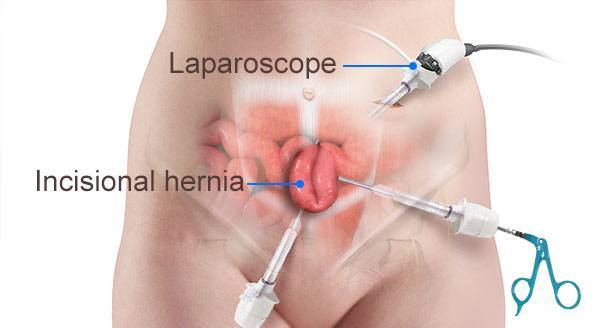
Your doctor may suggest a hernia belt (truss) which compresses the bulge back into its place and reduces the bulge. Surgery is not necessary for treating a small incisional hernia. However, a large painful hernia that is growing in size requires surgical repair. Surgery is indicated in the following conditions:

Your doctor may recommend either open surgery or laparoscopic surgery based on the severity of the situation and what you may benefit from. Open surgery is considered as the best approach for treating incisional hernias. In an open surgery, your surgeon will make a single cut at the site of the bulge, remove the fat and scar tissue and push the internal organs back inside the abdominal cavity. In a laparoscopic surgery, several small incisions will be made on the abdominal wall to insert a laparoscope (flexible tube with a lighted device and a camera attached to it) and other special instruments. The bulge will be pushed back into your abdomen.
The hernia can then be repaired by two methodsthrough either open or laparoscopic procedures. Incisional herniathat is smaller than 3 centimetres may be repaired with just suturing the cut. However, larger hernias require a tension-free repair with a mesh patch to support the abdominal wall. These procedures will be performed under general, local or regional anaesthesia.

Recurrent incisional hernia repair may be prevented by following a few measures: